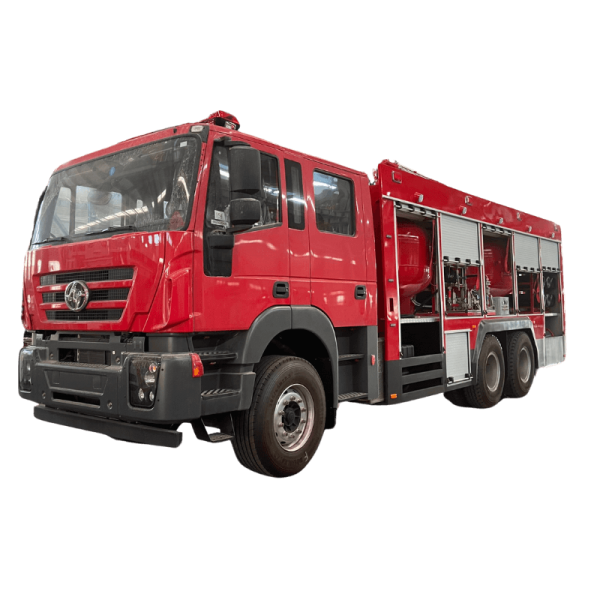Introduction
Vacuum trucks play a crucial role in waste management, offering a versatile and efficient solution for the collection and disposal of various types of waste. These specialized vehicles are equipped with powerful vacuum systems that can suck up liquid, sludge, and other waste materials from a wide range of environments, including industrial sites, construction sites, and municipal facilities. In this comprehensive guide, we will delve into the world of vacuum truck waste disposal, exploring the types of waste that can be handled, the process of collection and disposal, and the environmental and regulatory considerations that come into play.

Types of Waste Handled by Vacuum Trucks
One of the key advantages of vacuum trucks is their ability to handle a wide variety of waste materials. Some of the most common types of waste that can be collected and disposed of using vacuum trucks include:
1. Liquid Waste: Vacuum trucks are highly effective at removing liquid waste, such as sewage, wastewater, and industrial effluents. The powerful vacuum system can quickly and efficiently suck up large volumes of liquid waste, making it an ideal solution for cleaning up spills and preventing environmental contamination.
2. Sludge and Slurry: Vacuum trucks are also equipped to handle solid waste materials, such as sludge and slurry. These materials are often generated in industrial processes, such as mining, manufacturing, and agriculture, and can be difficult to handle and dispose of. Vacuum trucks can effectively remove sludge and slurry from tanks, pits, and other containment structures, reducing the risk of environmental pollution.
3. Hazardous Waste: Vacuum trucks are commonly used for the collection and disposal of hazardous waste, including chemicals, solvents, and other toxic substances. These vehicles are equipped with specialized tanks and containment systems to ensure the safe handling and transport of hazardous materials, in compliance with strict regulations and guidelines.
4. Dry Waste: In addition to liquid and solid waste, vacuum trucks can also handle dry waste materials, such as sand, gravel, and other debris. By using specialized attachments and equipment, vacuum trucks can effectively suck up and transport dry waste materials, making them a versatile tool for a wide range of waste management applications.
The Process of Vacuum Truck Waste Disposal
The process of vacuum truck waste disposal involves several key steps, from the initial collection of waste materials to the final disposal or treatment of the waste. Here is an overview of the typical process involved in vacuum truck waste disposal:
1. Going Here : The first step in the waste disposal process is the collection of waste materials using the vacuum system of the truck. The vacuum system creates a powerful suction force that draws waste materials into the tank of the truck, where they are stored for transport to a disposal facility.
2. Transportation: Once the waste materials have been collected, the vacuum truck transports them to a designated disposal facility, such as a treatment plant, landfill, or recycling center. During transportation, it is crucial to ensure that the waste is securely contained and that all necessary safety precautions are taken to prevent spills or leaks.
3. Disposal or Treatment: Depending on the type of waste materials collected, they may be disposed of in different ways. Liquid waste, for example, may be treated at a wastewater treatment plant, while solid waste may be taken to a landfill for disposal. Hazardous waste must be handled in accordance with strict regulations and guidelines to ensure the safety of the environment and public health.
4. Cleaning and Maintenance: After the waste materials have been disposed of, the vacuum truck must be thoroughly cleaned and maintained to ensure its continued effectiveness and safety. This may involve flushing out the tank, inspecting the vacuum system for any damage or wear, and replacing any worn components to prevent leaks or malfunctions.
Environmental and Regulatory Considerations
Vacuum truck waste disposal is subject to a range of environmental and regulatory considerations to ensure the safe and responsible handling of waste materials. Some of the key factors to consider include:
1. Environmental Impact: The improper disposal of waste materials can have a significant impact on the environment, leading to pollution of waterways, soil contamination, and harm to wildlife. It is essential to follow best practices for waste management and disposal to minimize the environmental impact of vacuum truck operations.
2. Regulatory Compliance: Vacuum truck waste disposal is governed by a complex web of regulations and guidelines at the local, state, and federal levels. These regulations cover a wide range of issues, including the handling and transportation of hazardous materials, the disposal of waste in landfills, and the treatment of wastewater. It is crucial for operators of vacuum trucks to stay informed about these regulations and ensure compliance to avoid fines, penalties, or legal action.
3. Safety Considerations: Vacuum truck operations can pose risks to the health and safety of workers, the public, and the environment. It is essential to implement strict safety protocols, provide proper training to operators, and use appropriate personal protective equipment to prevent accidents and injuries during waste disposal activities.
4. Waste Minimization and Recycling: In addition to proper disposal, it is important to consider waste minimization and recycling as part of a sustainable waste management strategy. Vacuum truck operators can explore opportunities to reduce waste generation, recycle materials where possible, and promote environmentally friendly practices to minimize the impact of waste disposal on the environment.
Conclusion
Vacuum truck waste disposal plays a vital role in managing and disposing of a wide range of waste materials in a safe, efficient, and environmentally responsible manner. By understanding the types of waste that can be handled, the process of collection and disposal, and the environmental and regulatory considerations involved, operators of vacuum trucks can ensure that waste disposal activities are conducted in compliance with best practices and regulations. With proper training, equipment, and adherence to safety protocols, vacuum truck operators can make a positive contribution to waste management and environmental protection efforts.
